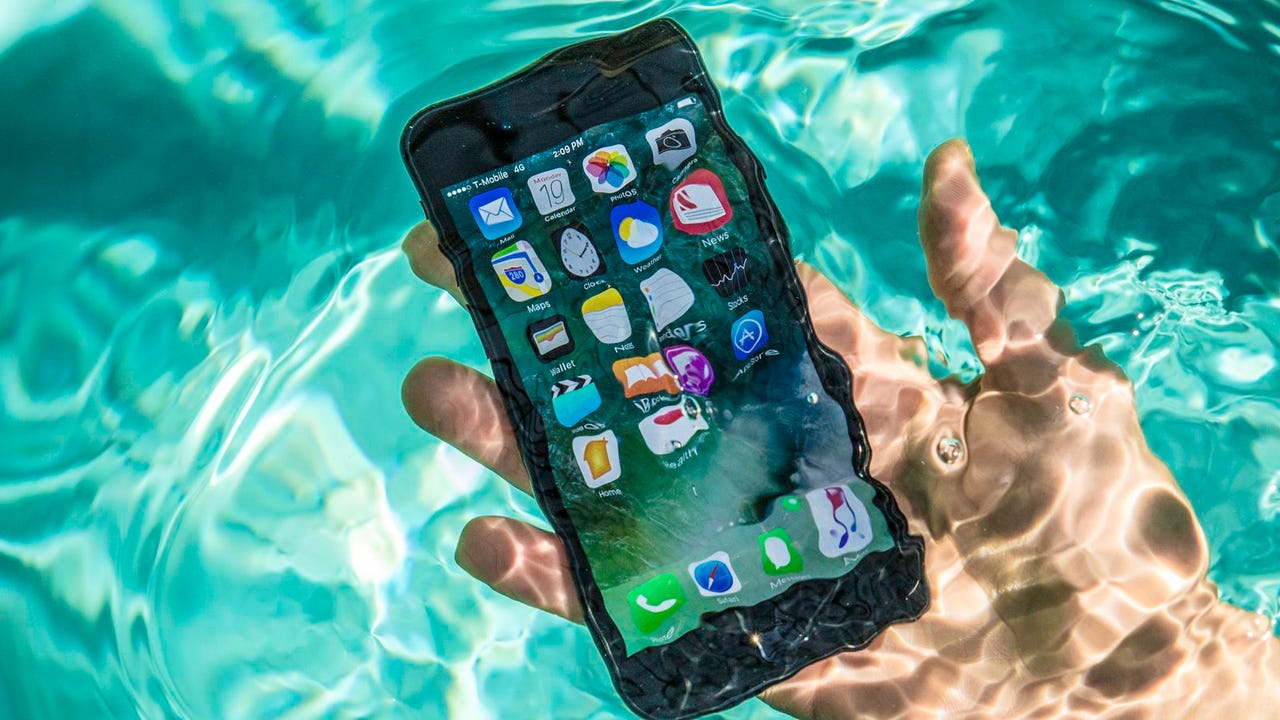'ZDNET Recommends': What exactly does it mean?
ZDNET's recommendations are based on many hours of testing, research, and comparison shopping. We gather data from the best available sources, including vendor and retailer listings as well as other relevant and independent reviews sites. And we pore over customer reviews to find out what matters to real people who already own and use the products and services we’re assessing.
When you click through from our site to a retailer and buy a product or service, we may earn affiliate commissions. This helps support our work, but does not affect what we cover or how, and it does not affect the price you pay. Neither ZDNET nor the author are compensated for these independent reviews. Indeed, we follow strict guidelines that ensure our editorial content is never influenced by advertisers.
ZDNET's editorial team writes on behalf of you, our reader. Our goal is to deliver the most accurate information and the most knowledgeable advice possible in order to help you make smarter buying decisions on tech gear and a wide array of products and services. Our editors thoroughly review and fact-check every article to ensure that our content meets the highest standards. If we have made an error or published misleading information, we will correct or clarify the article. If you see inaccuracies in our content, please report the mistake via this form.
How to get water out of your phone

One of the most impressive features of some of the newer smartphones is their water resistance. They're kitted out with gaskets and seals that should let them live another day if you're to clumsily drop one into a puddle or in the toilet, or upend a carafe of water in its vicinity.
But what if you have an older smartphone that isn't waterproof? Of what if the waterproofing have been compromised because of age or damage (a cracked screen or a dent in the frame of the phone or tablet can allow water to seep past any seals of gaskets)?
Before we go any further, it's worth pointing out that there are no guarantees here. Your device might already be damaged beyond economical repair
You have seconds -- minutes at most -- to save the life of your smartphone or tablet. Here's what you need to do to give yourself the best chance of saving it.
Also: How to record a phone call on your iPhone
Materials needed:
- A plastic bag (any will do, but a Ziploc-style bag is best), and the snugger it is the better
- Moisture-absorbing substance (see below)
- A warm area to encourage drying
1. Power it down - FAST!
Switch it off as fast as you can.
Back in the day, when smartphones had removable batteries, flipping the battery out was the quickest way to do that. Nowadays, you don't have that option, so you must use the power button.
Power it down
Don't assume that just because your device is still working that it can't be damaged. Water is nasty that way. By turning it off, you reduce the chance of your smartphone being permanently damaged by an electrical short circuit.
If the phone is already off, leave it off. Don't try powering it up or charging it or anything like that, until you've gone through the drying process.
2. Dry the outside
Use whatever you have nearby to dry the outside of the device: Towel, paper towel, your t-shirt, etc.
Shake as much liquid out of the ports as you can.
The less water on the exterior of the device, the better.
3. Emergency drying
Now comes the emergency drying.
The moisture-absorbing substance that many recommend is rice. Unfortunately, in my testing it's rubbish and the rice particles end up causing more problems. But rice is something that many people have handy, so if you have nothing else, use the rice while you get something better.
What's better than rice?
Here are some other common household things that are great moisture absorbers:
- Silica gel packets. Loose crystals will do in a pinch. Just pop them into an envelope to stop them from going everywhere.
Silica gel packets
- Dehumidifying crystals. A common brand is DampRid (fragrance-free is best), but they're basically all the same and contain a chemical called anhydrous calcium chloride. Again, the sort that comes in bags is best, but loose crystals work if you put them into an envelope to stop them from going everywhere.
DampRid
There's not much finesse here... Just put the device in the bag with the moisture absorber, then seal the bag, and pop it into a warm (not hot -- you don't want to damage your smartphone or tablet) place.
Note: If you have a vacuum sealer in your kitchen (people use this a lot for sous-vide cooking), then this might give you an edge. Put the phone and your moisture-absorbing substance of choice in a vacuum bag and use the sealer to suck out the air. The partial vacuum will cause the water to evaporate a little quicker and help dry your device faster and more thoroughly.
If all you have is rice, then use the rice first while you head out to the store to find silica gel or dehumidifying crystals. You can then swap out the rice for a better moisture-absorber and continue the drying from there.
If you like to be prepared for any aquatic mishaps, then you might want to consider buying a few pre-made moisture-absorbing bags specially designed for electronics. They're only a few bucks and have a long shelf life.
Kensington Evap rescue pouch
4. Now you have two options
- The first is wait. Twenty-four hours is good -- but 48 hours is better -- for the moisture-absorbing chemical you've chosen to do its work. When you've waited as long as you can, cross your fingers, power up the device, and hope for the best.
- Alternatively, you can seek out a professional smartphone drying service such as Redux, which claim a high success rate when it comes to reviving soaked smartphones. Redux said it has a success rate of 84%, and it has revived phones damaged by beer, mud, and even soup!
Redux
5. Prevention is better than cure
Not soaking your device in the first place has a lot better success rate than trying to dry it out after the fact. Even a cheap waterproof case or bag can save you hundreds of dollars and a lot of headaches and tears.
Kona Submariner Waterproof Case
6. Salt water is likely a death sentence for your device
Salt water is probably one of the worst things you can drop your smartphone into (cola is a close second). Not only is salt water incredibly conductive, which dramatically increases the likelihood of a damaging short-circuit, but it's also very corrosive, so even if your device survives the dip, corrosion damage might kill it a few weeks or months down the line.
The only guaranteed long-term way to recover a smartphone that's suffered salt water damage is to take it apart, then clean all the components using a solvent that's safe for circuit boards, and reassemble.
